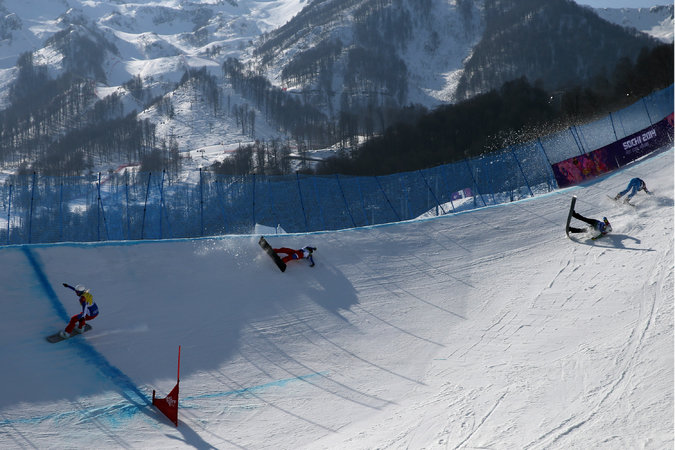 Photo by Josh Haner NYT
Photo by Josh Haner NYT The winter Olympics don’t particularly inspire me to think of similarities to the Infantry. Sure the desire to win is there, there is the shooting in the biathlon and plenty of sports requiring high levels of physical fitness and endurance. We really don’t train many troops to ski these days unlike WWII where we had the 10th Mountain Division and the Special Service Force who were expert ski troops.
What got me thinking about the infantry, the Olympics and women was a New York Times article showcasing the lopsided numbers of injuries women have suffered on the “Extreme Park” events where the courses are the same for the sexes. That’s unlike sports like women’s luge that starts lower on the track, or the smaller hill used for the women’s ski jump or men’s downhill where the course is longer and more difficult.
The Extreme Park events though offer no differences between the sexes. The halfpipe is 22’ tall. The slopetsyle course features the same obstacles and jumps. The ski/snowboard cross course features multiple racers on the exact same course and the aerials are done on the same sized jumps. Where the Extreme Park differs from the other courses is in injuries. As of Monday, 22 accidents have injured athletes to the point they could compete no further or had to be carried off the course in a stretcher. 16 of those injured or 73% have been women. That’s in spite of the fact that there are less women competing in these events compared to the men. 44% of the 466 competitors are women. Just to be clear less than half of the competitors make up three quarters of the casualties.
Last year Secretary of Defense Panetta decided to remove the combat exclusion policy and open up all combat specialties to women by 1 Jan 2016. Short branch justifications all combat specialties will be open to women. The Marines are conducting highly public experiments to develop a data base upon which to determine a course of action. The Army’s approach has been much more secretive.
One argument against women in the Infantry has centered on women’s physical abilities being lower than men. Those that disagree make the case that women can train to overcome these shortcomings. The reality is that there is a limit to how strong you can make any person. Gender differences even for Olympic athletes leave women with less muscle mass, less strength and less aerobic capacity. That’s why men are doing triple flips in slopestyle and women aren’t doing doubles.
Part of the physical performance problem is the higher rate of injuries women suffer. We are learning again that women suffer more injuries in basic training and are especially prone to stress fractures compared to men. A 2011 Army paper by COL Barbara Springer, PhD and MAJ Amy Ross, MD “Musculoskeletal Injuries in Military Women,” cites multiple Army, VA and Navy data, including a Navy study where 1 in 367 women recruits suffered a pelvic stress fracture, versus one in 40,000 male recruits. The Army noted its experience with these types of injuries is almost three times as heavy.
Then there’s the Army May 2013 Technical Bulletin, “Prevention and Control of Musculoskeletal Injuries”. It stated women are almost 67% more likely than a male soldier to be disabled and discharged for a musculoskeletal disorder.
The Olympics are a cautionary tale applicable to putting women in the infantry. Some will take the position that if a woman wants to risk it it’s her health at risk. The problem with that thinking is that in combat those evacuating the wounded are typically getting shot at. Not to mention doctrinally it takes two soldiers to evacuate a wounded one (it often takes three or more in difficult terrain or where there are no secure lines). Including those in the force that statistically suffer more injuries creates more situations for the healthy to be wounded rescuing their comrades and depletes combat power by requiring more troops to evacuate the wounded.
The Sochi Olympics are worth remembering as we study and integrate women in the Infantry. They provide unique lessons with subjects of Olympic quality physical fitness and an opportunity to directly compare performance. To ignore it would be akin to waiting for the oncoming avalanche to bury you.
